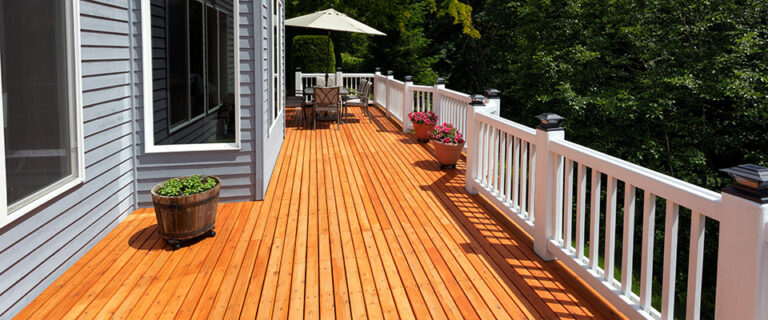Cedar decks are a popular choice among homeowners, offering a natural aesthetic and functional benefits. If you’re planning to build or upgrade a deck, understanding the pros and cons of cedar as a decking material is essential. Let’s dive into the details to help you make an informed decision, drawing insights from Bay Area Cable Railing, a trusted name in outdoor design.
The Advantages of Cedar Decks
- Natural Beauty and Appeal
Cedar wood is renowned for its rich color tones and natural texture. Its warm, inviting look enhances any outdoor space, creating a seamless connection with nature. This makes cedar an ideal choice for homeowners seeking an elegant yet earthy feel.
- Durability and Resistance
Cedar naturally resists rot, decay, and insect damage. Its durable properties ensure that your deck can withstand weather elements while maintaining its structural integrity. According to experts at Bay Area Cable Railing, this resilience makes cedar an excellent option for regions with fluctuating climates.
- Lightweight and Easy to Work With
Cedar wood is relatively lightweight, making it easier for contractors to cut, shape, and install. This characteristic reduces labor time and costs while allowing for more design flexibility.
- Eco-Friendly Choice
Choosing cedar aligns with sustainable living. It’s a renewable resource, and when responsibly sourced, cedar decks offer an environmentally friendly alternative to synthetic materials.
The Drawbacks of Cedar Decks
- Maintenance Requirements
Cedar decks require regular maintenance to preserve their beauty and longevity. Routine sealing, staining, or painting is necessary to protect the wood from moisture and UV rays. Without proper care, the wood can fade or warp over time.
- Cost Considerations
While cedar is more affordable than some premium woods, it’s still pricier than pressure-treated lumber or composite materials. Homeowners should weigh the upfront investment against long-term benefits when making a decision.
- Softness and Vulnerability
Cedar is softer than other hardwoods, making it susceptible to scratches and dents. Heavy furniture, sharp objects, or high foot traffic can leave marks on the surface, potentially requiring repairs or refinishing.
- Shorter Lifespan Compared to Alternatives
Although cedar is durable, it doesn’t last as long as composite or hardwood decking options. Its natural properties may degrade faster in harsh environments, requiring replacements sooner than other materials.
Choosing the Right Decking Material
When deciding on decking materials, consider your budget, climate, and maintenance preferences. Cedar offers a balance of aesthetics and functionality, but it may not be the perfect fit for everyone. Bay Area Cable Railing emphasizes that understanding your specific needs is crucial to making the best choice for your outdoor space.
Conclusion
Cedar decks provide a timeless appeal with their natural beauty and eco-friendliness. However, they do come with maintenance demands and potential costs. By carefully weighing the pros and cons, you can determine whether cedar is the right material for your deck. For professional guidance and custom railing solutions, consult the team at Bay Area Cable Railing, your partner in creating stunning, durable outdoor spaces.
